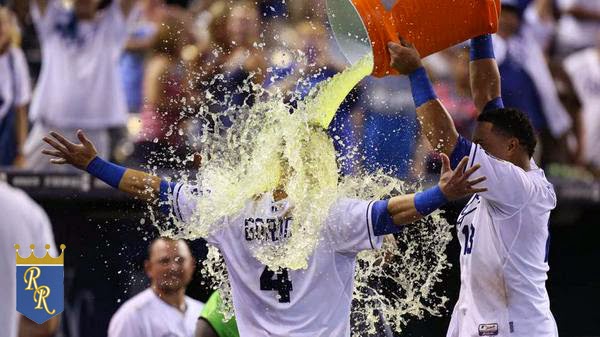I say hard luck because I don't believe for a second that Zimmer's ERA (4.82) is at all reflective of his 2013 performance. In fact, by some measures it would appear that Zimmer has in fact been quite dominate. So dominate that this promotion is probably long overdue.
Most of you reading this blog know the importance of strikeout percentage. Most of those people even realize that strikeout percentage is more important when evaluating players at the lower levels of Minor League Baseball. It is also no secret, that the Royals 2012 first round pick has had no problem fanning opposing hitters. In 18 starts as a Blue Rock, the 6'3" righty has struck out 21.6% of opposing hitters and 11.34 per nine innings. Zimmer has accomplished this while only walking 3.11 batters per 9 innings and has limited home runs to just 0.90 per 9. Naturally, this leaves Zimmer with an excellent FIP of 3.12.
I theorize that even Zimmer's FIP isn't praising Zimmer as high as it should be. Fielding Independent Pitching takes into consideration a pitcher's strikeout, walk and home run rate and provides the audience with a number that represents what his ERA should be based off of those three rate stats. However, it is also clear that a pitcher has a say in the number of ground balls that he allows.
In many cases FIP gets away with this because a pitcher's home run rate reflects the pitcher's ability to keep the ball down (xFIP goes even farther and neutralizes the home run percentage). The exclusion of ground ball percentage is even more pronounced in the evaluation of prospects due to shoddy infields and lesser fielders.
What we need is a stat that accounts for ground ball percentage. Fortunately, we have SIERA, which even goes a step farther and accounts for the following: (You can read the full article on SIERA here.)
- Allows for the fact that a high ground-ball rate is more useful to pitchers who walk more batters, due to the potential that double plays wipe away runners.
- Allows for the fact that a low fly-ball rate (and therefore, a low HR rate) is less useful to pitchers who strike out a lot of batters (e.g. Johan Santana's FIP tends to be higher than his ERA because the former treats all HR the same, even though Santana’s skill set portends this bombs allowed will usually be solo shots).
- Allows for the fact that adding strikeouts is more useful when you don't strike out many guys to begin with, since more runners get stranded.
- Allows for the fact that adding ground balls is more useful when you already allow a lot of ground balls because there are frequently runners on first.
- Corrects for the fact that QERA used GB/BIP instead of GB/PA (e.g. Joel Pineiro is all contact, so increasing his ground-ball rate means more ground balls than if Oliver Perez had done it, given he's not a high contact guy).
- Corrects for the fact that FIP and xFIP use IP as a denominator which means that luck on balls in play changes one's FIP.
Kyle Zimmer is second in SIERA for pitchers who have thrown 75 or more innings at the High-A level. This season Kyle Zimmer's SIERA stands 2.71, which is right in line with his career mark of 2.73. FIP is excellent at mirroring what a pitcher's ERA should have been in a given season, but according to Matt Swartz and Eric Seidman of Baseball Prospectus, SIERA overtakes FIP in predicting long term performance. Wouldn't that make SIERA more important than FIP in minor league evaluation?

No comments:
Post a Comment